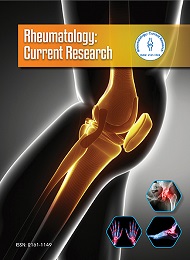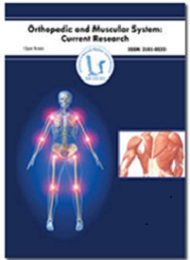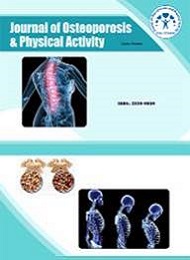Theme: Let’s get to the bottom of Rheumatology
Rheumatology 2022
On behalf of the organising committee, we are elated to welcome you all for 10th International Conference of Orthopedic Surgeons and Rheumatology which is taking place in Zurich, Switzerland from Aug 03-04, 2022. You all are cordially invited, do mark your inordinate presence at conference.
It will be conjointly persuade to be an excellent open door for the representatives from Universities and Institutes, hospitals, Orthopedists & Orthopedic surgeons to collaborate with best researchers and an impressive chance for businesses keen on increasing their international market reach.
We really appreciate your attention and your valuable collaboration with Rheumatology 2022. "Let’s get to the bottom of Rheumatology"
Rheumatology 2022 cordially invites all the presenters, and exhibitors who are interested in sharing their Knowledge and Research works in the area of Rheumatology to attend the conference “10th International Conference of Orthopedic Surgeons and Rheumatology”. We want you to attend and Register for the conference which is going to be held on August 03-04, 2022 in Zurich, Switzerland. The focus and the theme of the conference is “Let’s get to the bottom of Rheumatology”
Rheumatology is a branch of medicine deals with the diagnosis and therapy of rheumatic diseases like Rheumatism, arthritis, and other disorders of the joints, muscles, and ligaments. Moreover, it will focus on many interesting scientific sessions which covers a wide array of rheumatology disease, like Osteoarthritis, Septic arthritis, Spondyloarthopathies, reactive arthritis, Dermatomyositis, Scleroderma and many more advanced topics in the field of rheumatology. Research is the driving force, which needs to be translated towards advanced rheumatology.
The event endeavours to bring renowned Researchers, Professors, Medical and Industrial professionals, young scientists, students, and Business delegates under a single roof providing an opportunity to share the knowledge and scientific progress in the field of Rheumatology for the purpose of shaping the future research.
Rheumatoid arthritis is a most common disease as individuals from all ages suffer from this, however, superannuated are the major ones who suffer from this and face problems like inflammation in joints.
In recent times, there has been a tremendous upswing in patients preferring prescription drugs to OTC drugs. Prolonged overuse of RA medication may lead to drug resistance, owing to which patients suffering from this disease are anticipated to consult rheumatologists and follow advised therapy. Additionally, the number of OTC products available for treatment is meagre.
In 2019, among rheumatology, osteoarthritis affected about 7% of the worldwide population, quite 500 million people worldwide, therefore the number of individuals suffering from osteoarthritis globally increased by 48% from 1990 to 2019 along with that the global rheumatoid arthritis drugs market size was valued at $57,929 million in 2019, and is projected to reach $62,935 million by 2027, registering a CAGR of 2.8% from 2020 to 2027.
Moreover, the market players are adopting various strategies, like product launches, developments, acquisitions and mergers, and collaborations to increase awareness among the people, the supply of higher treatment options, and therefore the willingness to require up treatment are expected to feature to the expansion of the worldwide treatment market.
According to the below graph 30% of OTC(over the counter) is prescription, which is having a great impact on the market expansion for the pharmaceuticals industries of Rheumatology.
Track 1: Rheumatology
Rheumatology is a branch of medicine devoted to the diagnosis and therapy of rheumatic diseases. It affects joints tendons, ligaments, connective tissues, bones, and muscles, moreover, represents a subspecialty in internal medicine and paediatrics which means it relies on close relationships with other medical specialties.
The specialty of rheumatology has undergone a myriad of noteworthy advances in recent years, especially if we consider the development of state-of-the-art biological drugs with novel targets, made possible by rapid advances in imaging techniques.
Track 2: Osteoarthritis
Osteoarthritis is a type of degenerative joint diseases the most widely recognized chronic condition of the joints. It happens when the ligament or cushion between joints separates which are leading to pain, stiffness, swelling and pain. A joint is where two bones met up together. The ends of these bones are secured with defensive tissue called cartilage. The most commonly involved joints are the two near the ends of the fingers and the joint at the base of the thumbs; the knee and hip joints; and the joints of the neck and lower back.
Track 3: Arthritis
Arthritis is inflammation of one or additional of your joints. Most symptoms of arthritis are joint pain and stiffness, which usually worsen with age. Arthritis joint symptoms embrace swelling, pain, stiffness. Severe arthritis may result in chronic pain different common rheumatic conditions associated with inflammatory disease embody gouty arthritis, fibromyalgia, and rheumatoid arthritis. Moreover, it can be seen majorly in adults over the age of sixty five.
Track 4: Osteoporosis
Osteoporosis could be a condition that weakens bones, creating them fragile and more seemingly to break. Losing bone may be a normal a part of the ageing method, however some individuals lose bone density a lot of quicker than individuals this may result in osteoporosis and an raised risk of fractures. It affects the structure and therefore the strength of the bone so end up with fracture particularly within the spine, hip, and wrists. Osteoporosis affects over three million folks within the UK. Ladies are a lot of in danger of osteoporosis than men, notably if the menopause begins early (before the age of 45).
Track 5: Septic Arthritis
Acute septic arthritis is that the invasion of a joint by an infective agent leading to joint inflammation, symptoms will be redness, heat and pain in an exceedingly single joint related to a decreased ability to manoeuvre the joint. Onset is usually speedy different symptoms could include fever, weakness and headache often, quite one joint is also concerned particularly in neonates and youngsters. In neonates, infants i.e. throughout the primary year of life and toddlers, the signs and symptoms of septic arthritis will be deceptive and mimic different infectious and non-infectious disorders.
Track 6: Lupus
Lupus is associate autoimmune disorder within which the body's system erroneously attacks healthy tissue in several parts of the body. Symptoms vary between individuals and will be gentle to severe. Common symptoms embody painful and swollen joints, fever, chest pain, hair loss, mouth ulcers, swollen body fluid nodes, feeling tired, and a red rash that is most ordinarily on the face typically there square measure periods of unhealthiness, referred to as flares, and periods of remission throughout that there are few symptoms.
Track 7: Sjogren syndrome
Sjogren's syndrome could be a long-term disease that affects the body's moisture-producing (lacrimal and salivary) glands, and infrequently seriously affects different organ systems, like the lungs, kidneys, and nervous system. Primary symptoms are xerotes (dry mouth and dry eyes, pain and fatigue. different symptoms will embody dry skin, vaginal xerotes, a chronic cough, symptom within the arms and legs, feeling tired, muscle and joint pains, and thyroid issues. Those affected are at an exaggerated risk (15%) of cancer.
Track 8: Scleroderma
Scleroderma is a cluster of autoimmune diseases that will lead to changes to the skin, blood vessels, muscles and internal organs. The illness will be either localized to the skin or involve alternative organs, as well. Symptoms could embody areas of thickened skin, stiffness, feeling tired, and poor blood flow to the fingers or toes with cold exposure. One variety of the condition, called CREST syndrome, classically leads to Ca deposits, Raynaud's syndrome, esophageal issues, thickening of the skin of the fingers and toes, and areas of tiny, dilated blood vessels
Track 9: Dermatomyositis
Dermatomyositis (DM) is a long-run inflammatory disorder that affects skin and therefore the muscles. Its symptoms are usually eruption and worsening muscle weakness over time. These might occur suddenly or develop over months. Alternative symptoms might embody weight loss, fever, respiratory organ inflammation, or light-weight sensitivity. Complications might include calcium deposits in muscles or skin. The cause is unknown.
Theories include that it's an autoimmune disorder or a result of a virus infection. Moreover, dermatomyositis could develop as a paraneoplastic syndrome related to many types of malignancy. It's a kind of inflammatory myopathy whose diagnosis is usually based on some combination of symptoms, blood tests, diagnostic procedure, and muscle biopsies.
Track 10: Sport Injury
Injuries which happen while playing or doing some muscle work, as per research 21% of injuries among elite college athletes resulted in the athlete missing at least one day of competition, with the knee, lower leg, ankle, or foot accounting for 77% of these injuries. In addition to those sports injuries, traumatic head or neck injuries are the major cause of death from sports injuries.
Track 11: Relapsing polychondritis
Relapsing polychondritis is a multi-systemic condition characterised by repeated episodes of inflammation and deterioration of cartilage. The usually painful disease will cause joint deformity and be dangerous if the respiratory tract, heart valves, or blood vessels are affected. Moreover, it's thought to be related to an immune-mediated attack on specific proteins that are plethoric in cartilage.
The diagnosis is reached on the basis of the symptoms and supported by investigations like blood tests and generally the premise investigations. Treatment could involve symptomatic treatment with painkillers or anti-inflammatory medications, and additional severe cases could need suppression of the immune system.
Track 12: Kawasaki disease
Kawasaki disease is a syndrome of unknown cause that leads to a fever and chiefly affects youngsters beneath five years of age. It's a type of redness, where blood vessels become inflamed throughout the body. The fever generally lasts for quite 5 days and isn't littered with usual medications different common symptoms include giant massive nodes within the neck, a rash within the venereal space, lips, palms, or soles of the feet, and red eyes within 3 weeks of the onset, the skin from the hands and feet might peel, when that recovery generally happens.
It doesn't spread between people diagnosis is typically based on an individual's signs and symptoms alternative tests like an ultrasound of the heart and blood tests could support the identification diagnosis should take into consideration several alternative conditions that will present similar options, as well as scarlet fever and juvenile rheumatoid arthritis.
Track 13: Thromboangiitis obliterans
Thromboangiitis obliterans, also referred to as Buerger sickness, may be a recurring progressive inflammation and thrombosis (clotting) of little and medium arteries and veins of the hands and feet. It's powerfully related to use of tobacco products, primarily from smoking, however is also related to smokeless tobacco.
The main symptom is pain within the affected areas, at rest and while walking. The impaired circulation will increase sensitivity to cold. Peripheral pulses are diminished or absent.
Track 14: Sarcoidosis
Sarcoidosis is illness involving abnormal collections of inflammatory cells that kind lumps called granulomata. The illness sometimes begins within the lungs, skin, or lymph nodes. Less ordinarily affected are the eyes, liver, heart, and brain. The signs and symptoms depend upon the organ concerned. Only mild, symptoms are seen. Once it affects the lungs, wheezing, coughing, shortness of breath, or hurting could occur. Some could have Löfgren syndrome with fever, giant lymph nodes, arthritis, and a rash called erythema nodosum.
Track 15: Fibromyalgia
Fibromyalgia may be a medical condition characterised by chronic widespread pain and a heightened pain response to pressure, temperature, weather, and touch. Different symptoms embody tiredness to a degree that standard activities are affected sleep issues like nonrestorative sleep and restlessness, and cognitive dysfunctions. Some people additionally report restless legs syndrome, bowel or bladder issues, numbness and tingling and sensitivity to noise, lights or temperature. Patients with fibromyalgia are additional probably to suffer from depression, anxiety and posttraumatic stress disorder.
Track 16: Polymyalgia rheumatic
Polymyalgia rheumatic (PMR) is a syndrome with pain or stiffness, sometimes within the neck, shoulders, upper arms, and hips, however which can occur everywhere the body. The pain will be terribly abrupt. Most of the people with PMR awaken within the morning with pain in their muscles; but, several cases have occurred during which the person has developed the pain throughout the evenings or has pain and stiffness all day long.
People who have polymyalgia rheumatica can also have arteritis (giant cell arteritis), an inflammation of blood vessels within the face which may cause blindness if not treated quickly. The pain and stiffness may result in a very low quality of life, and may result in depression. . Persons of Northern European descent are at greater risk. There is no definitive laboratory take a look at, however C-reactive protein (CRP) and red blood cell sedimentation rate (ESR) is helpful.
Track 17: Hand & Wrist
Hand infections will cause extreme problems that proceed even once the contamination has settled, for instance, firmness, and loss of tissues, as an example, skin, nerve and bone. Hence, early and forceful treatment of diseases is fundamental. At the purpose once seen early, some styles of disease may be treated with anti-infection agents and neighbourhood rest and splashing. In any case, numerous contaminations begin to cause serious problems.
Crack hazard factors incorporate pathology (more typical in women than in men) and threat (obsessive breaks). Cracks of the arm bone could happen in detachment - for the foremost half due to an on the spot blow - but these are usually connected with break or relocation of the opposite bone in this lower.
Track 18: Orthopaedics
Orthopaedics is that the division of surgery involved with disorders involving the system. Orthopedic surgeons practice both surgical and nonsurgical means that to treat chronic diseases, system trauma, spine diseases, sports injuries, infections, tumors and noninheritable disorders.
Track 19: Serum sickness
Serum sickness in humans is a reaction to proteins in antiserum derived from a non-human animal source, occurring 5–10 days when exposure. Symptoms typically include a rash, joint pain, fever, and lymphadenopathy. It's a kind of hypersensitivity, specifically immune advanced hypersensitivity (type III). The term serum sickness–like reaction (SSLR) is sometimes used to check with similar diseases that arise from the introduction of certain non-protein substances, like penicillin.
Serum sickness could also be diagnosed supported the symptoms, and using a blood {test|biopsy} and a urine test. It's going to be prevented by not using an antibody derived from animal serum, and through prophylactic antihistamines or corticosteroids. It always resolves naturally, however could also be treated with corticosteroids, antihistamines, analgesics, and (in severe cases) prednisone. It absolutely was 1st characterised in 1906.
Track 20: Giant cell arthritis
Giant cell arteritis (GCA), also referred to as arteritis, is an inflammatory autoimmune disorder of enormous blood vessels. Symptoms could include headache, pain over the temples, flu-like symptoms, vision defect, and opening gap the mouth. Complication will include blockage of the artery to the eye with resulting blindness, arteria dissection, and aortic aneurysm. GCA is often related to polymyalgia rheumatic.
The cause is unknown. The underlying mechanism involves inflammation of the little blood vessels that occur inside the walls of larger arteries. This primarily affects arteries around the head and neck, though some within the chest can also be affected. Diagnosis is suspected based on symptoms, blood tests, and medical imaging, and confirmed by diagnostic test of the temporal artery. However, in regarding 10% of individuals the temporal artery is normal.
Track 21: Musculoskeletal Disorder
Musculoskeletal Disorder are wounds and diseases that influence the human body's Movement or musculoskeletal framework (i.e. muscles, ligaments, tendons, nerves, plates, veins, and so on.). It will emerge from the contact of physical variables with ergonomic, mental, social, and word connected parts. At the purpose once a specialist is completely hospitable MSD chance components, they begin to exhaustion. At the purpose once weakness surpasses their body's rescue framework they build up a musculoskeletal lop-sidedness.
After some time, as weakness continues to beat recovery and therefore the musculoskeletal unevenness holds on, a musculoskeletal issue creates. The seriousness of MSDs will change. At times, they cause agony and distress that meddles together with your standard exercises. Early conclusion and treatment could help facilitate your manifestations and advance your long-term posture. At times, the side effects of MSDs intrude into regular assignments, for instance, strolling or catching. You will build up a restricted scope of movement and experience issue finishing your normal exercises.
Conference Highlights
- Rheumatology
- Osteoarthritis
- Arthritis
- Osteoporosis
- Septic Arthritis
- Lupus
- Sjogren syndrome
- Scleroderma
- Dermatomyositis
- Polymyalgia rheumatic
- Relapsing polychondritis
- Kawasaki disease
- Thromboangiitis obliterans
- Sarcoidosis
- Fibromyalgia
- Psoriatic arthritis
- Hand & Wrist
- Orthopaedics
- Serum sickness
- Giant cell arthritis
- Musculoskeletal Disorder
To share your views and research, please click here to register for the Conference.
To Collaborate Scientific Professionals around the World
| Conference Date | August 31-01, 2022 | ||
| Sponsors & Exhibitors |
|
||
| Speaker Opportunity Closed | |||
| Poster Opportunity Closed | Click Here to View | ||
Useful Links
Special Issues
All accepted abstracts will be published in respective Our International Journals.
- Orthopaedic & Muscular System: Current Research
- Journal of Arthritis
- Journal of Osteoporosis and Physical Activity
Abstracts will be provided with Digital Object Identifier by





